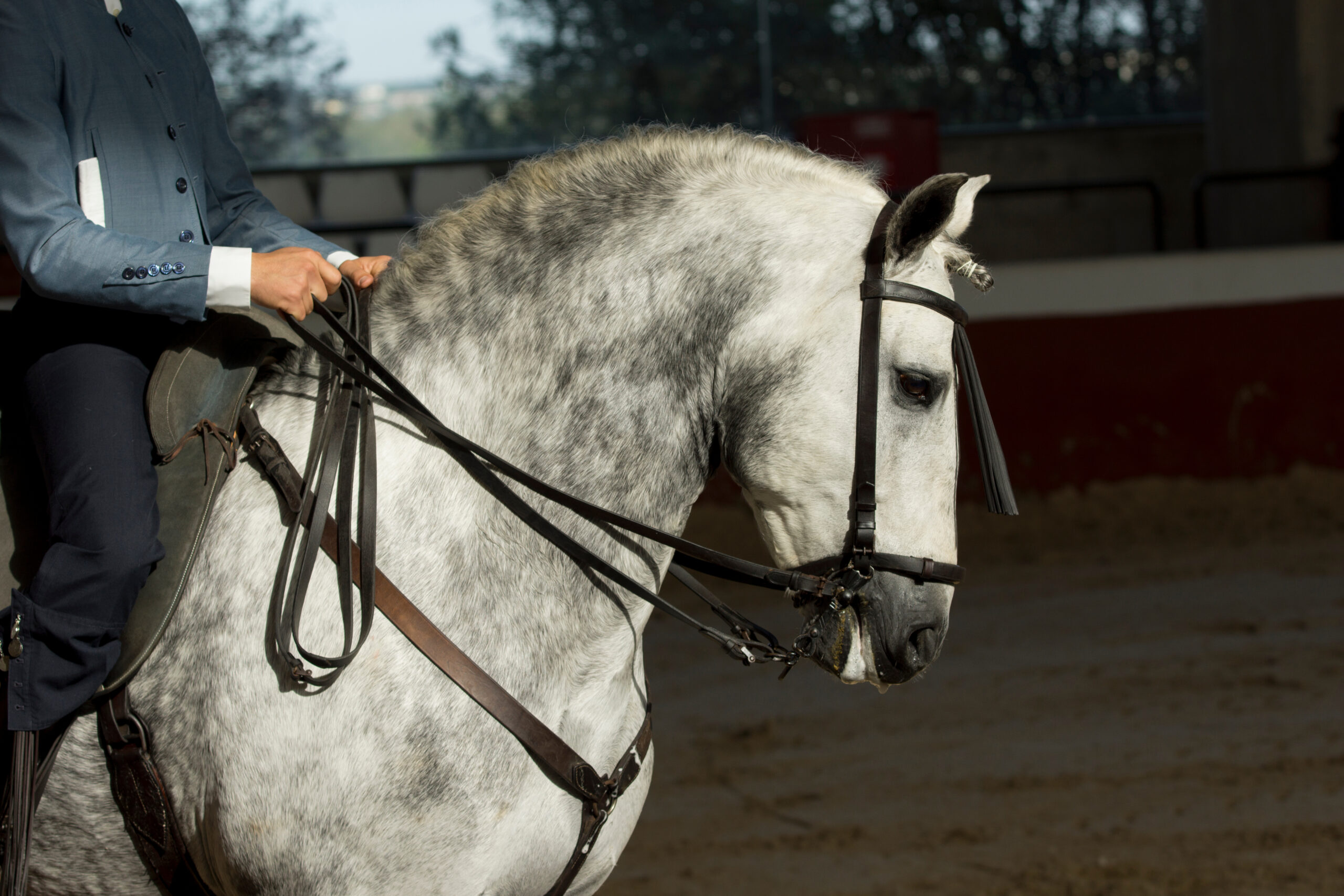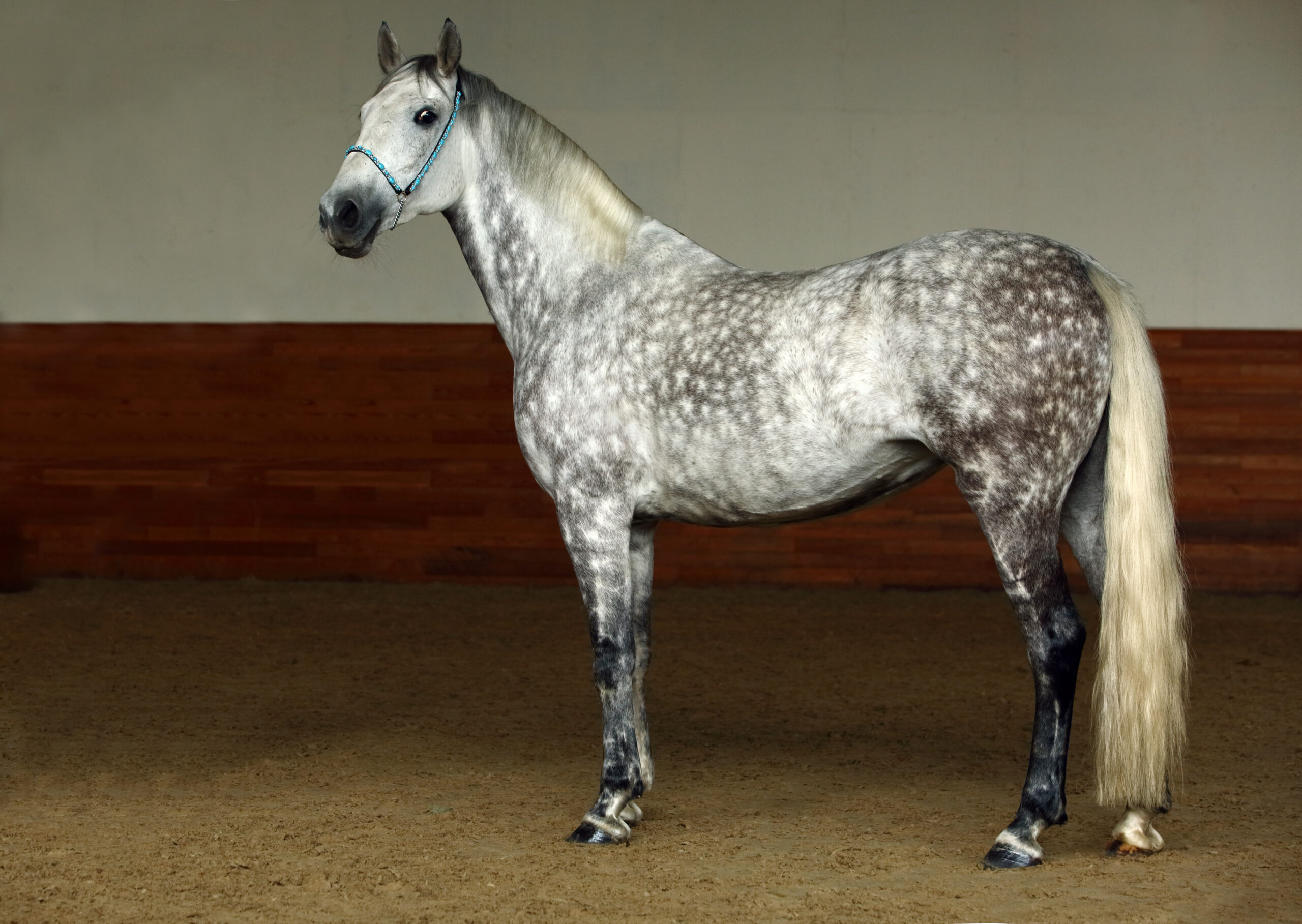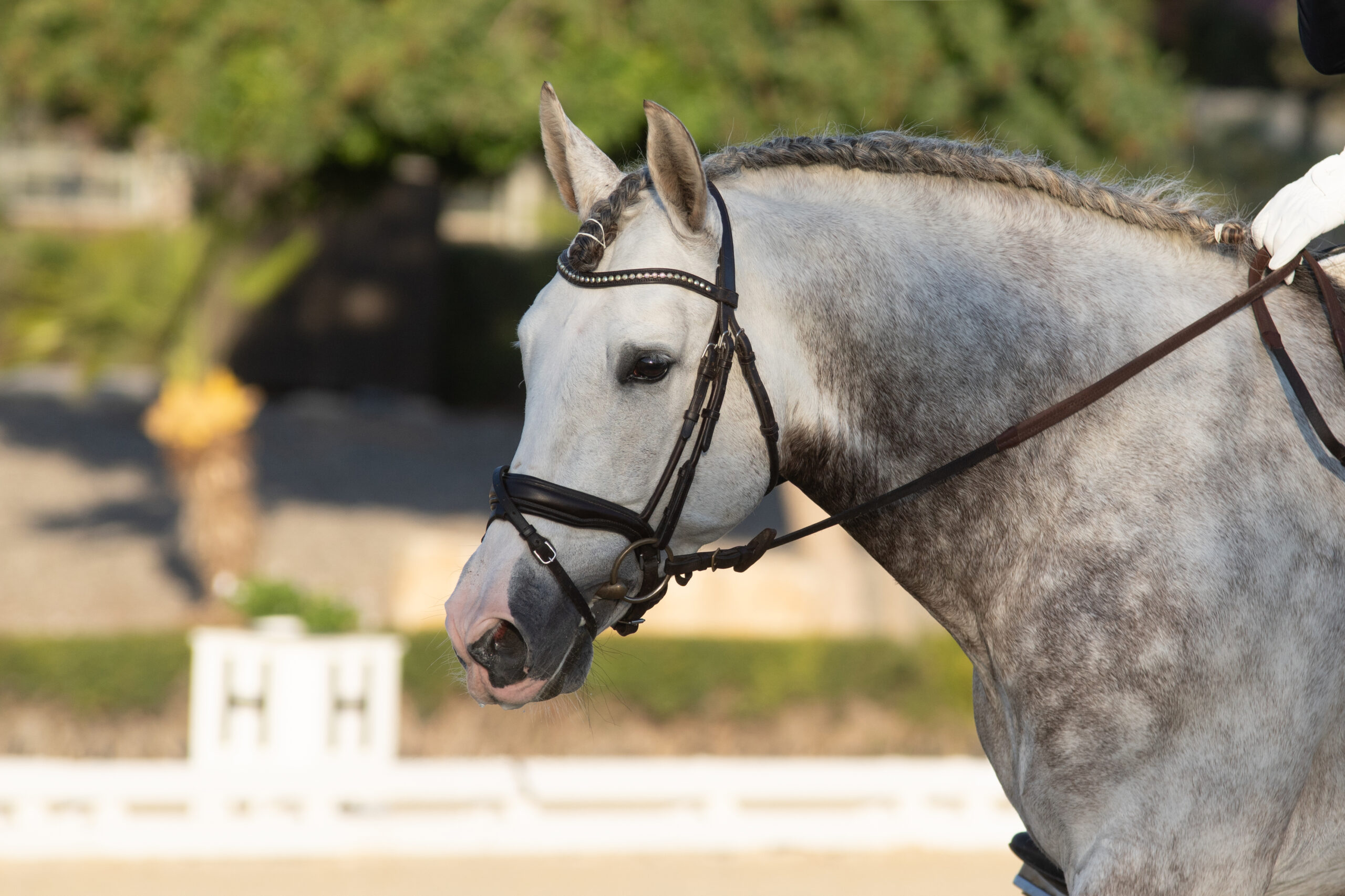Beautiful, willing, and intelligent, the Andalusian Horse has influenced many horse breeds across the world. It’s not surprising that these lovely horses from the Iberian Peninsula capture the imagination. Andalusian Horses are certainly stunning and their history is rich and dramatic..
Andalusian Horses – History and Origins
The Andalusian Horse originated in the part of Spain known as Andalusia. This region has probably been important for the quality of its horses since pre-Roman times. Andalusia, situated in southern Spain, has been influenced by numerous people, including the Greeks, Romans, Carthaginians, Arabs, and later the Vandals and Visigoths. As different groups came, settled, and moved on, they undoubtedly brought their own horses with them.
There were also various populations of Iberian semi-feral horses such as the Sorraia. While horses were certainly in the Iberian Peninsula thousands of years ago, it’s unlikely the little horses of the cave paintings are direct ancestors of the Andalusian. However, some of the semi-feral horses may have been in the Iberian Peninsula since the Bronze Age. Their descendants are likely to have contributed to the Andalusian.
By medieval times, there were Carthusian monasteries in Andalusia, and for many years it was suggested these monasteries provided the root stock of the Andalusian breed in the fifteenth century. Some scholars disagree, pointing out that the cartularies (monastic documents) suggest that there were only small numbers of horses at the monasteries. Also, the beautiful gray coloring that is now associated with Spanish Horses does not appear to have been particularly popular with the monks. Bay and black were the most commonly listed colors.
The most important period for breed development appears to have been under Philip II of Spain, beginning around the year 1567. For the next fifty years, royal resources were devoted to creating the perfect breed for a king. Breeding stock was selected not only from the horses that already existed in Andalusia but also from horses imported into Spain from elsewhere in Europe.
What is the Andalusian Horse used for?
Historically the Andalusian was mainly used as a superior riding horse for nobility and royalty. It was then used for herding cattle and similar work, in Spain and the Americas. It is still prized as a riding and work horse, yet can also make a great competition and dressage horse in the right hands. It’s also a popular choice for movies and TV.
Barb Horses from North Africa also played a key role in the creation of the breed. The Royal Stud was set up at Cordoba (Cordova), which since ancient times had a reputation for the quality of its horse breeding. Some scholars see the early seventeenth century as a time during which the Andalusian was sometimes changing in undesirable ways. However, the policy was, ultimately, very successful.
As Spain’s power increased across Europe, Spanish Horses became one of the most admired and sought-after horse breeds for royalty and nobility. They were the equine symbols of Baroque style, with their full, flowing manes curling over proud, curving necks. Their eyes were full and luminous and their heads noble and well-defined. The Andalusian type became the ideal Spanish Horse, and that became the name it was known by elsewhere in Europe.

Andalusians can be used as classical dressage horses due to their naturally strong and graceful movements and active paces. Increasingly, they are also able to perform as sport horses.
The Foundations of Modern Dressage
Famous equestrians, such as the Duke of Newcastle, praised the Spanish Horse and rated it highly. Examples of impressive Iberian stallions began to appear in images of kings and other rulers. Charles I appeared in his portraits riding an Iberian Horse. When Oliver Cromwell’s government ruled England, Cromwell had a portrait painted, which showed him riding just such a horse. Spanish Horses were used to breed the best light cavalry horses in Europe. The use of the Spanish Horse was closely linked to a type of riding known as manège riding. This highly skilled, advanced type of training and riding was the foundation of modern dressage. In Spain, the horses were also used for traditional work, such as herding bulls, and a range of sporting activities eventually developed from this. Meanwhile, Spain’s power now extended to the Americas. Here, Spanish Horses had an important part to play on both continents. As they began to roam freely across the grasslands, other breeds would develop from them, including Criollos in South America and the legendary Mustang in North America. In Europe, the Portuguese Lusitano and probably the Menorquin of Menorca are related to the Andalusian. While the Andalusian Horse and its relatives have, like all horse breeds, been through difficult times over the years, their future now looks assured.There is global interest in these lovely, versatile. The breed now tends to be known as the Pura Raza Española, or PRE, although sometimes the Andalusian is seen as a particularly pure or original type within this breed. In the eighteenth century, Spanish Horses were still the. Francois de la Gueriniere, an important writer who contributed to the development of classical dressage, praised their strong legs and agility. He also noted their pride, nobility, and courage, all qualities which made them superb horses for the manège, the parade, and in battle.
Video of Andalusian horses
Conformation
Andalusian Horses are generally categorized as medium-sized riding horses, averaging 15.1 1/2 (61.5 inches/156 cm) in height, and weighing around 512 kilograms/1,129 lb. They are versatile and also used for carriage work. The mares are on average slightly smaller than the stallions and geldings. Minimum height restrictions apply to breeding stock and these standards are strictly maintained. The Andalusian has a distinctive phenotype, or form, which conveys both power and elegance. Their necks are beautifully arched, giving them a naturally balanced head carriage.
They are generally compact horses and extremely agile. The powerful chests and quarters are elegant, as well. Their muscularity and strength are carried with grace. The hocks are notably strong. In profile, the face is straight rather than distinctly convex, with large, expressive eyes and sharp, alert ears. While many of the Andalusians are gray, there is a good proportion of bay and black Andalusians. Other coat colors are permissible but rarer. They have excellent hooves and active paces. Last but not least, their wonderful flowing manes and tails are a true glory.
Why are Andalusian Horses so expensive?
Andalusian Horses are highly prized and desirable animals. Their good temperament and physical qualities are exceptional. These standards are maintained by strict regulation and registration. Controlling the breeding results in horses of a very high standard, and the price inevitably reflects their superb qualities.
Characteristics of the Andalusian Horse
For many people, the Andalusian has it all: amiability, beauty, and athleticism. Temperamentally, they are essentially calm and willing, yet capable of engaging in challenging and even dangerous activities. Traditionally, one of their roles is in the bullring. They are capable of participating in most equestrian activities but excel in events where their athleticism and quick responses are showcased. Whether stallion, mare, or gelding, the breed is noted for its kind and willing nature. When properly trained, they are highly responsive to the aids. This, combined with their willingness, makes them one of the greatest performance horses in the world.

Andalusian Horses are generally categorized as medium-sized riding horses, averaging 15.1 1/2 (61.5 inches/156 cm) in height, and weighing around 512 kilograms/1,129 lb.
Andalusian Horse – Breeding and Uses
Created by skilled stablemasters for Spanish kings, using the best stock in Europe, the Andalusian became influential in the creation of many other breeds. These include the Lippizaner and Kladruber, as well as many horse breeds in the Americas. Above all, it is the versatility of the Andalusian that makes this breed special. As work horses, herding cattle, and performing a range of other activities, the Andalusian Horse has developed into a hardy and reliable breed.
They also excel as classical dressage horses due to their naturally strong and graceful movements and active paces. Increasingly, they are also able to perform as sport horses. One area in which they excel is equestrian games, especially the exciting modern sport of Working Equitation. This event showcases their heritage role as well as their agility. They are also used in dressage to music and in the skilled displays of garrocha, which is the traditional equipment and method of managing bulls. Plus, of course, they continue to be popular in movies and on TV. Their charisma makes them the undoubted star of any show. Best of all, they are simply superb riding horses.

Andausians are essentially calm and willing, yet capable of engaging in challenging and even dangerous activities
Diet and Nutrition
Andalusians are basically sound and healthy horses, and their regime should reflect this. Access to lush grazing, as with many other breeds, is not good for them. Keeping them in an environment in which they can move about is beneficial. They will be able to select the forage and herbs they need. A track system using different surfaces, including gravel and sand, will ensure they get plenty of exercise while foraging. This will maintain the flexibility and good health of these active horses and also be good for their feet.
Are Andalusian Horses good for beginners?
Andalusian Horses can be great for beginners. They have wonderful temperaments and are very willing. They need to be handled correctly, though, and given the interesting, challenging work they enjoy.
Health and Behavior of Andalusian Horses
One of the notable aspects of the Andalusian is their superb temperament. Many stallions are working horses. Most keep a calm and composed demeanor, even in the presence of other stallions, and mares. This is an outstanding quality for horses working in a team sport or any environment where other horses are nearby. Their health and soundness are best maintained by simple regimes that allow them time outdoors. If they are overfed and underexercised, they will be prone to laminitis and metabolic conditions. Melanoma can be another issue in the gray Andalusians. Being active, intelligent horses, they bond with people and need interesting, even challenging work, to enjoy life to the full.
The IALHA
Standards for registration of the Andalusian Horse are strict. The International Andalusian & Lusitano Horse Association (IALHA) is responsible for both managing the studbook and the registry of horses and breeders. It essentially offers quality assurance by only accepting Andalusians and Lusitanos with registration documents from specific registries. High standards for documentation, verification, and microchipping are assured.

